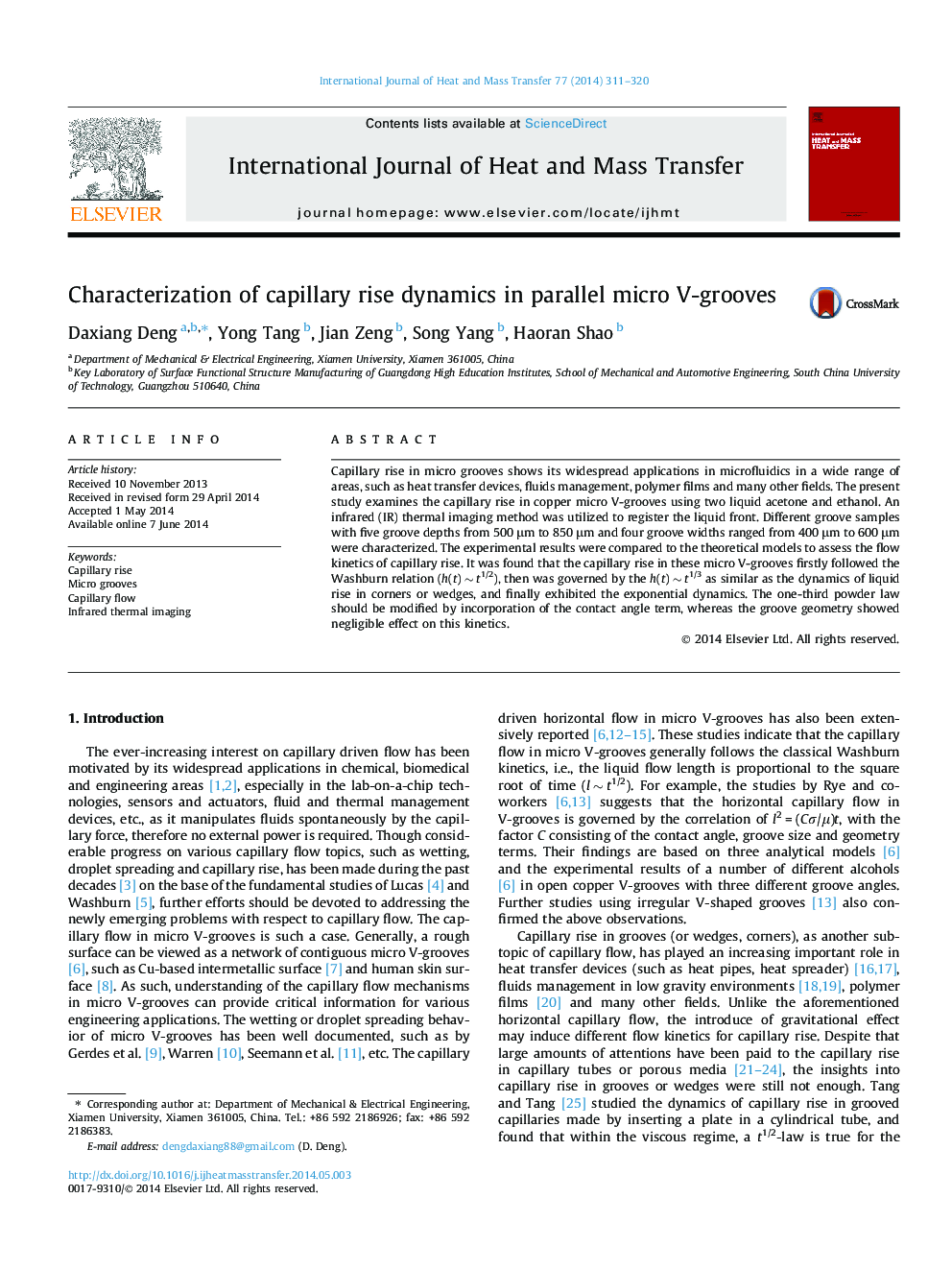| Article ID | Journal | Published Year | Pages | File Type |
|---|---|---|---|---|
| 657794 | International Journal of Heat and Mass Transfer | 2014 | 10 Pages |
Abstract
Capillary rise in micro grooves shows its widespread applications in microfluidics in a wide range of areas, such as heat transfer devices, fluids management, polymer films and many other fields. The present study examines the capillary rise in copper micro V-grooves using two liquid acetone and ethanol. An infrared (IR) thermal imaging method was utilized to register the liquid front. Different groove samples with five groove depths from 500 μm to 850 μm and four groove widths ranged from 400 μm to 600 μm were characterized. The experimental results were compared to the theoretical models to assess the flow kinetics of capillary rise. It was found that the capillary rise in these micro V-grooves firstly followed the Washburn relation (h(t) â¼Â t1/2), then was governed by the h(t) â¼Â t1/3 as similar as the dynamics of liquid rise in corners or wedges, and finally exhibited the exponential dynamics. The one-third powder law should be modified by incorporation of the contact angle term, whereas the groove geometry showed negligible effect on this kinetics.
Related Topics
Physical Sciences and Engineering
Chemical Engineering
Fluid Flow and Transfer Processes
Authors
Daxiang Deng, Yong Tang, Jian Zeng, Song Yang, Haoran Shao,
